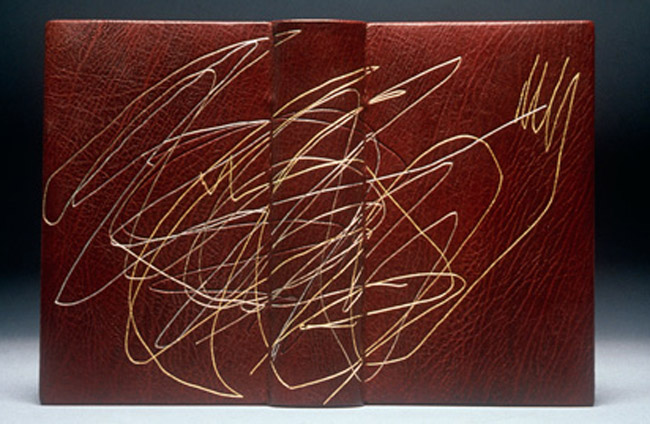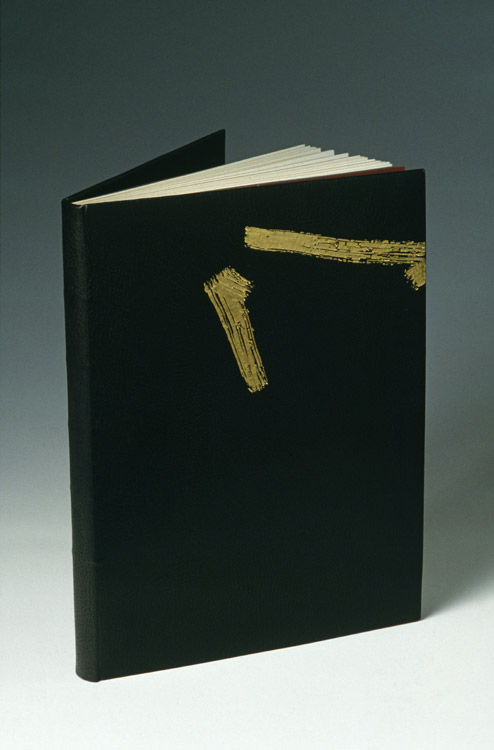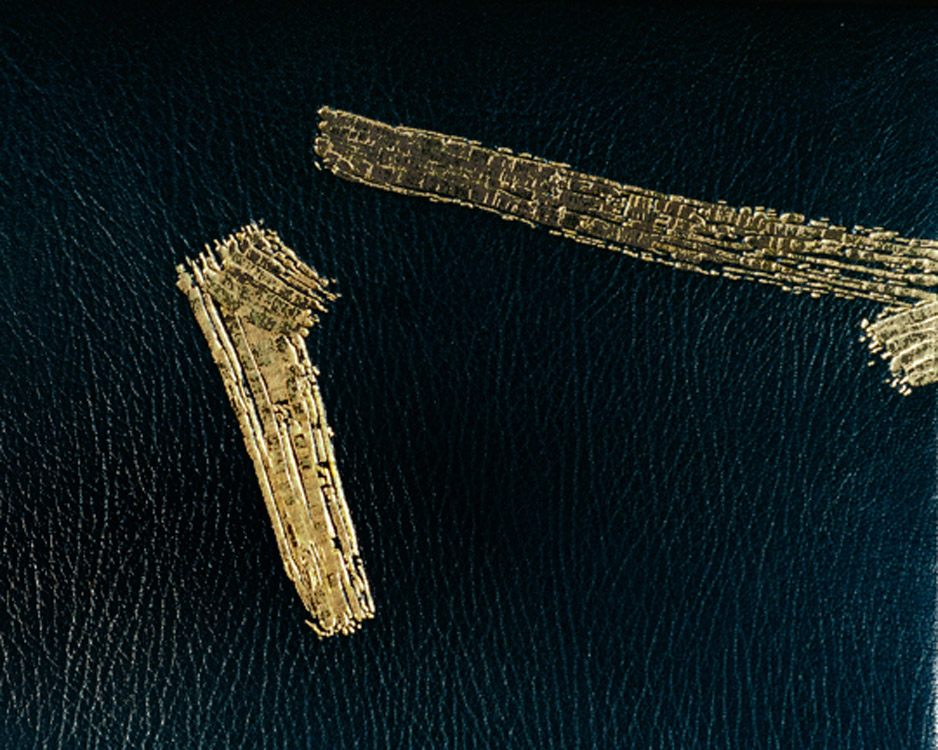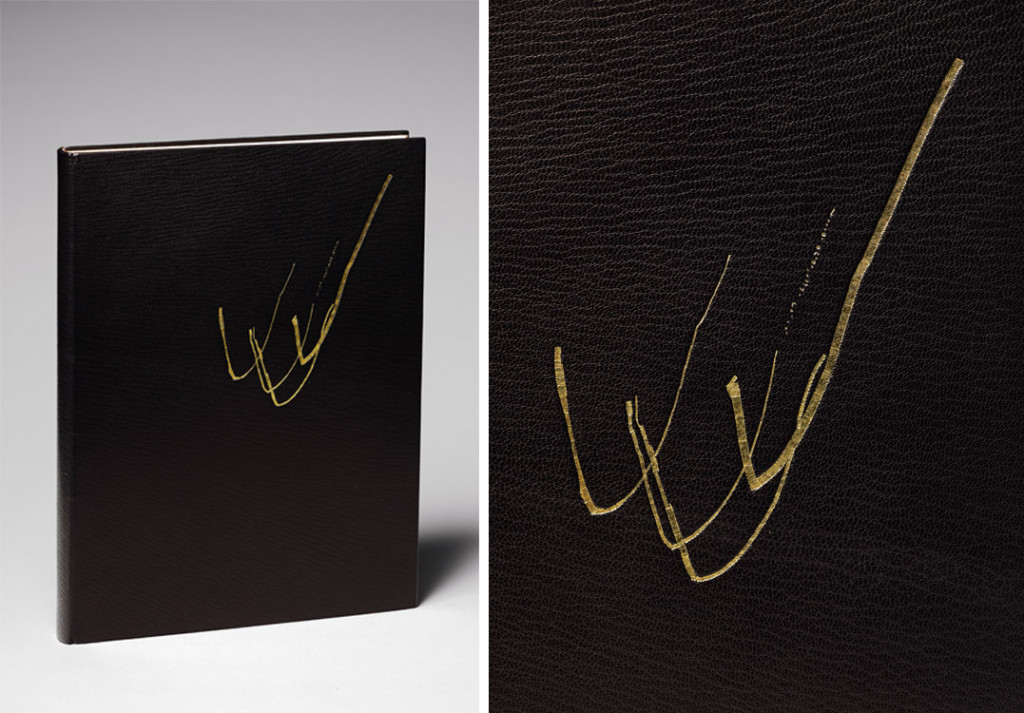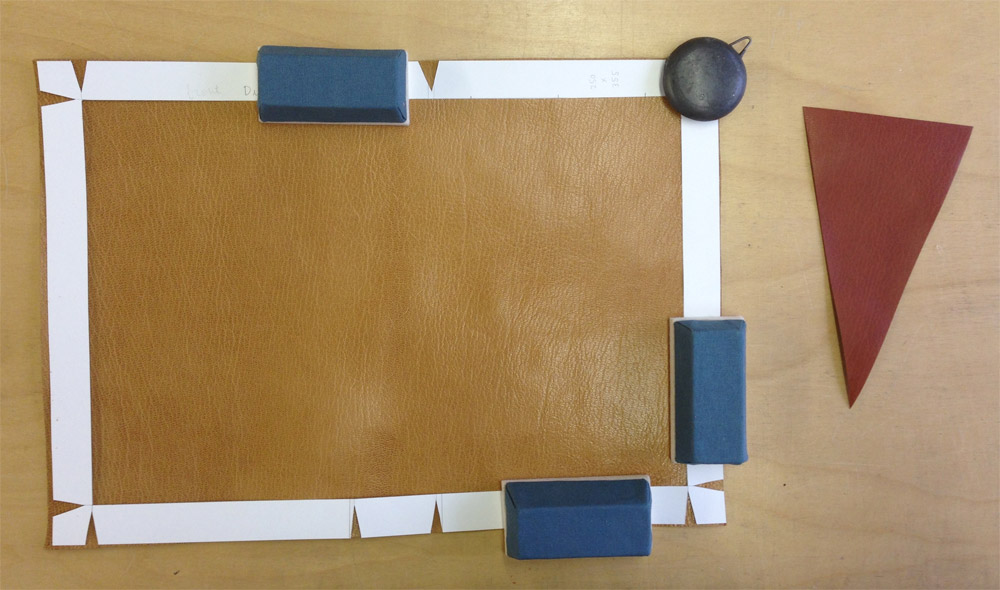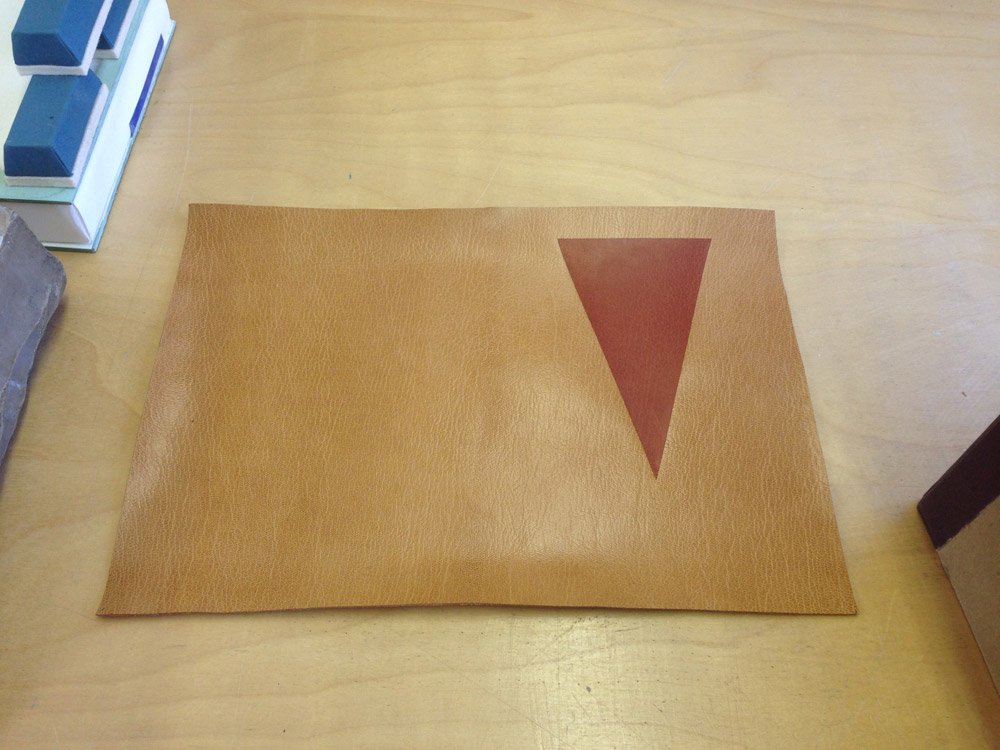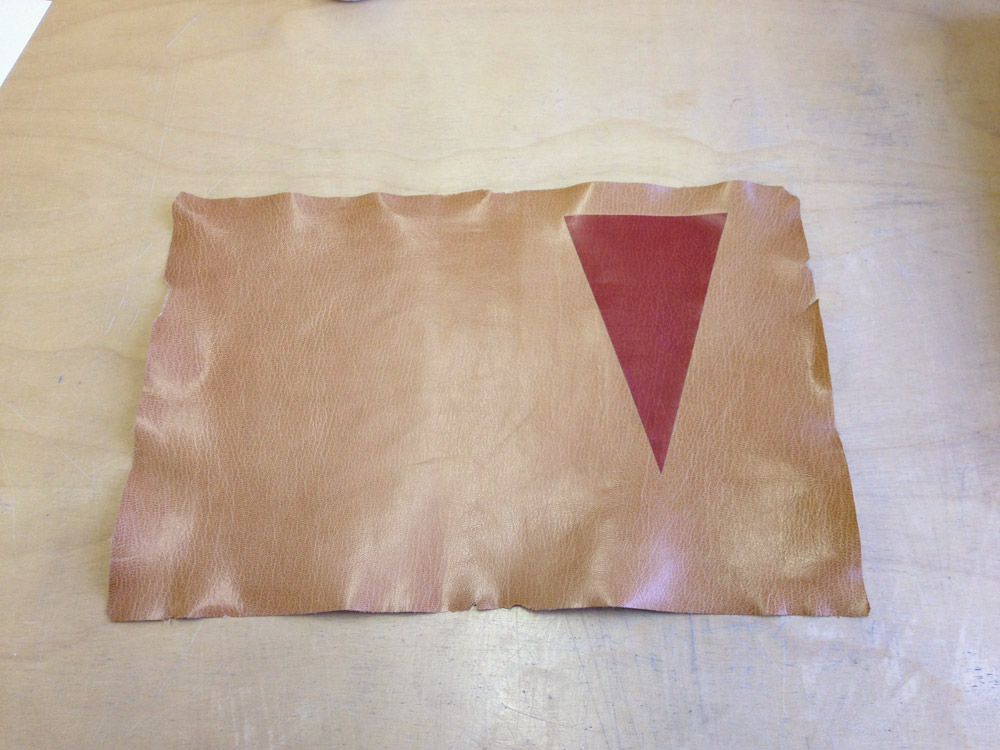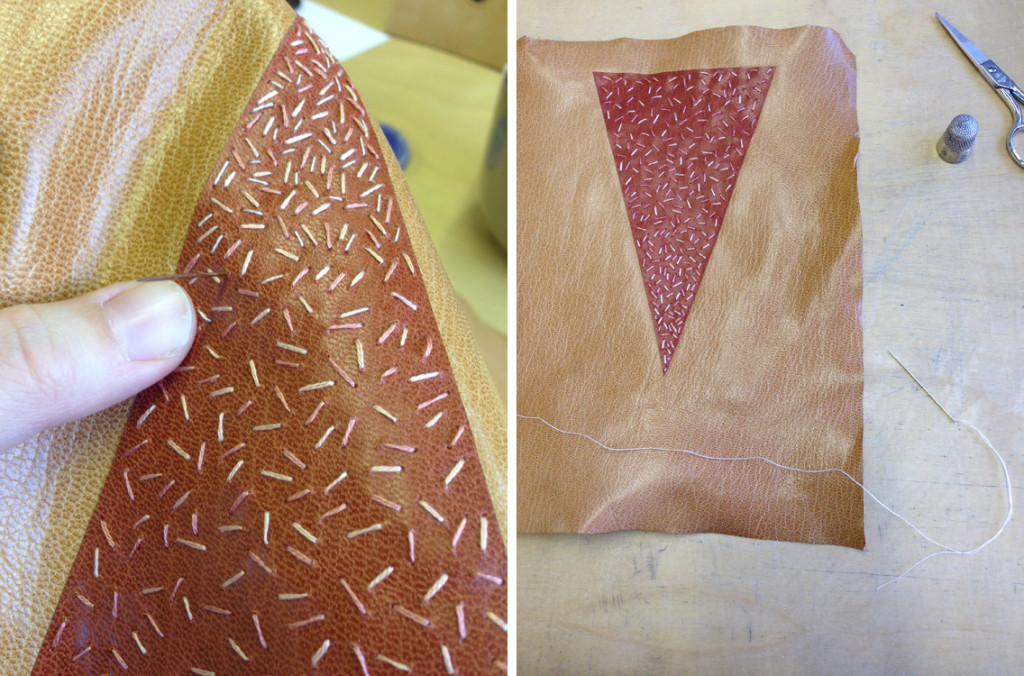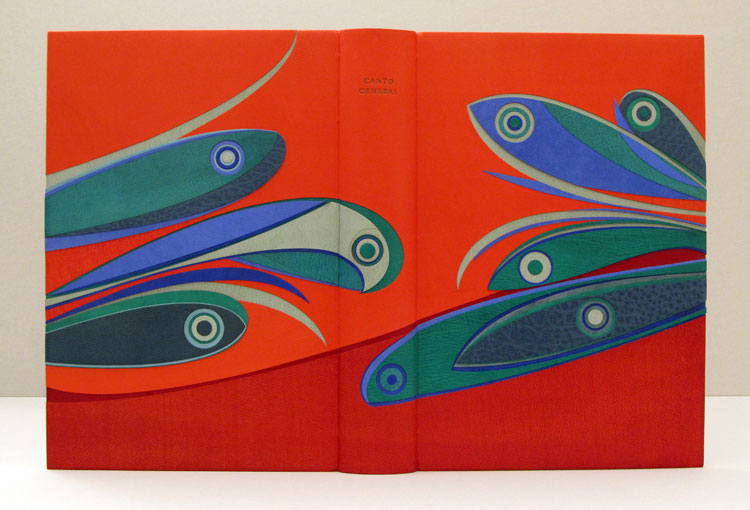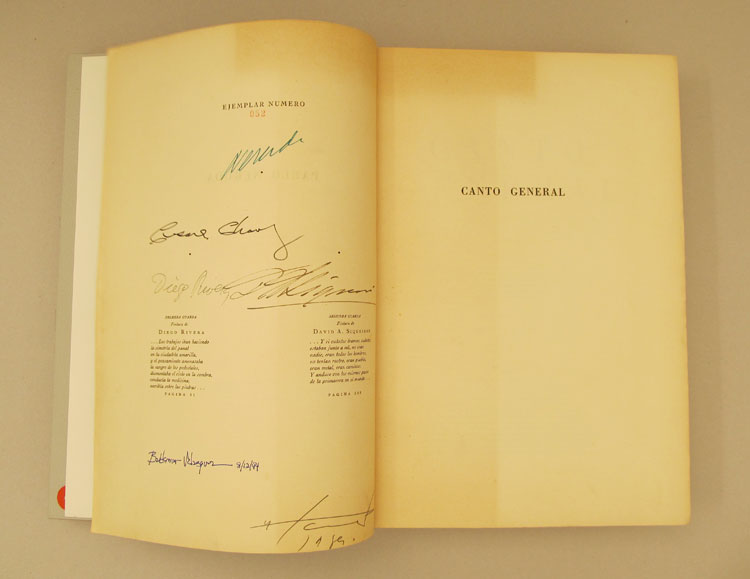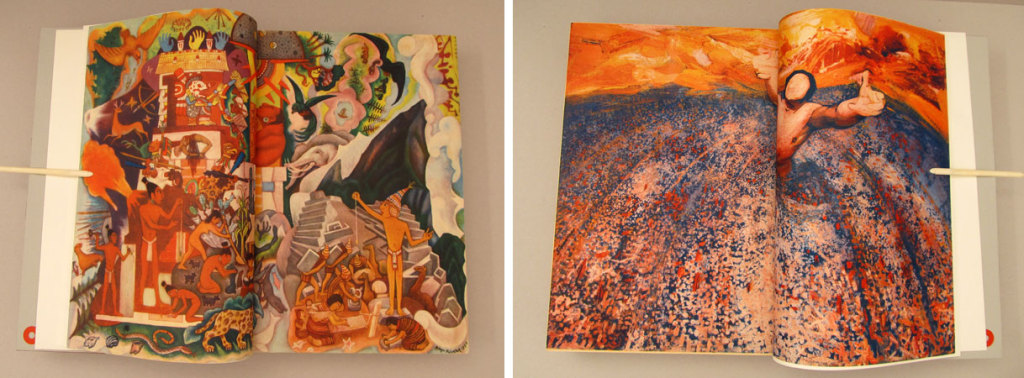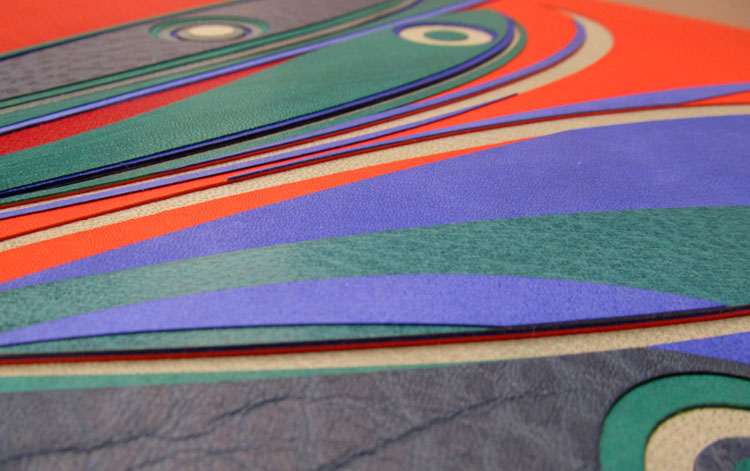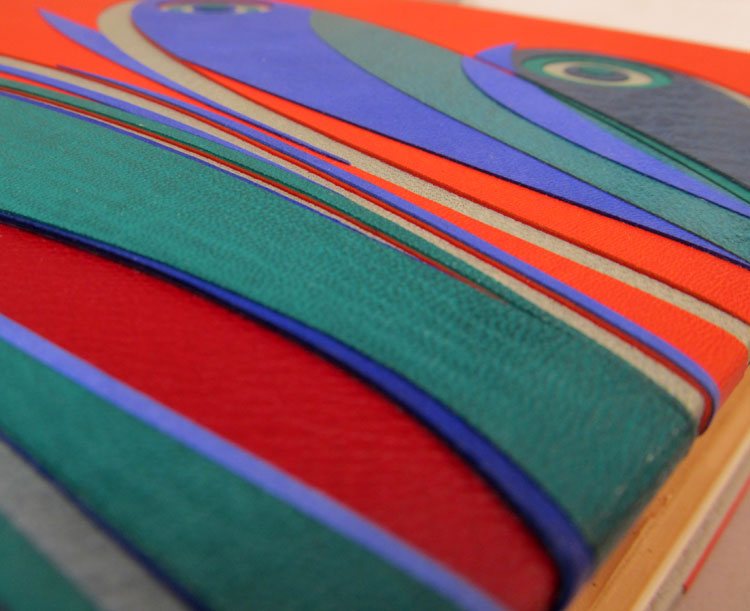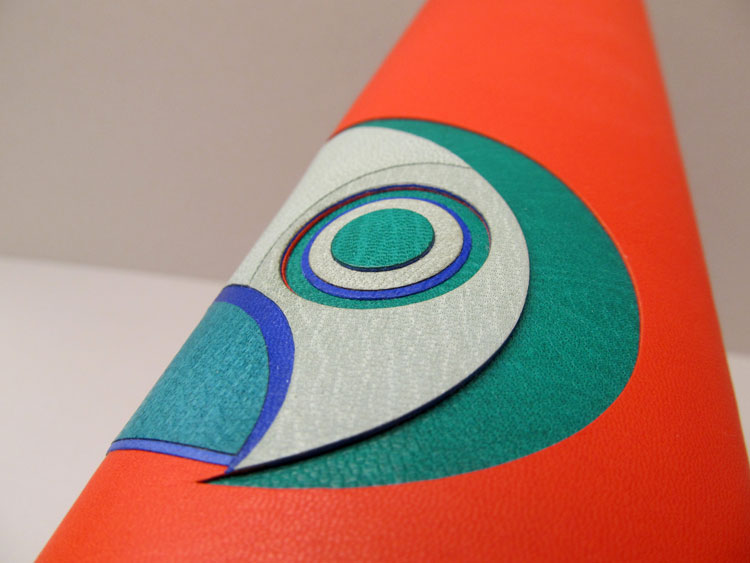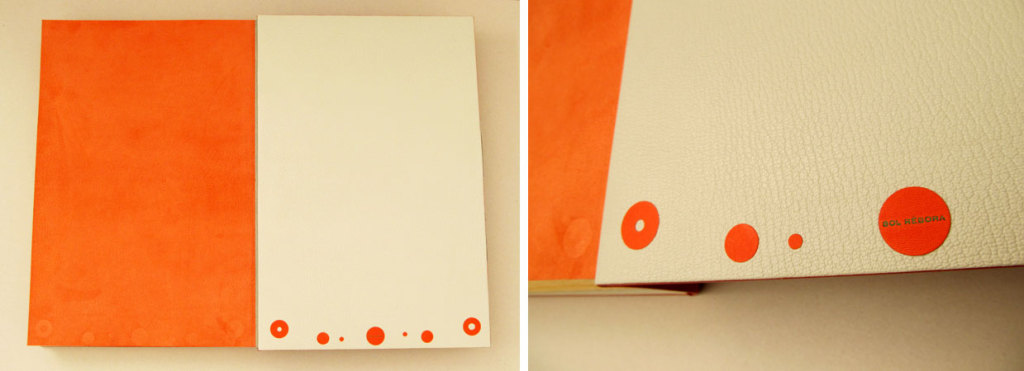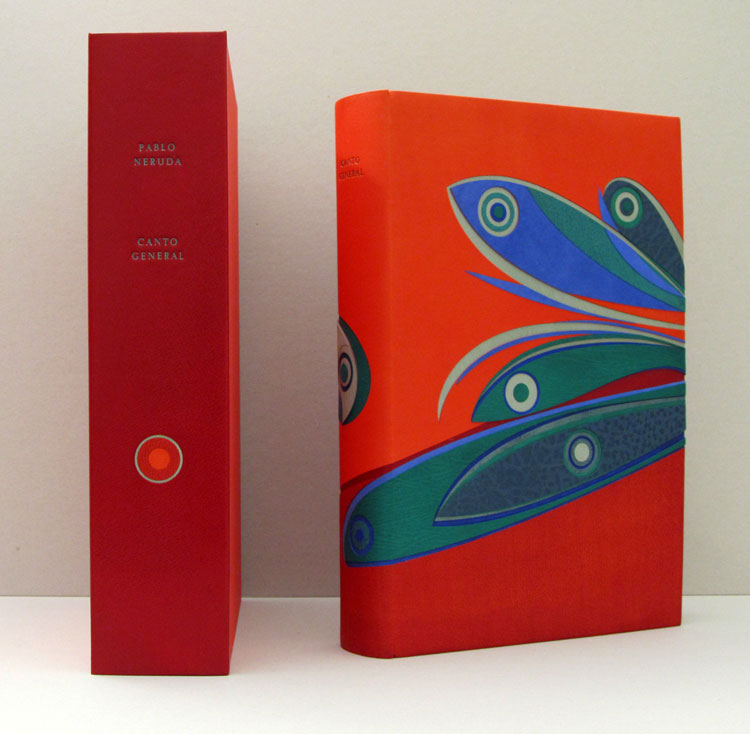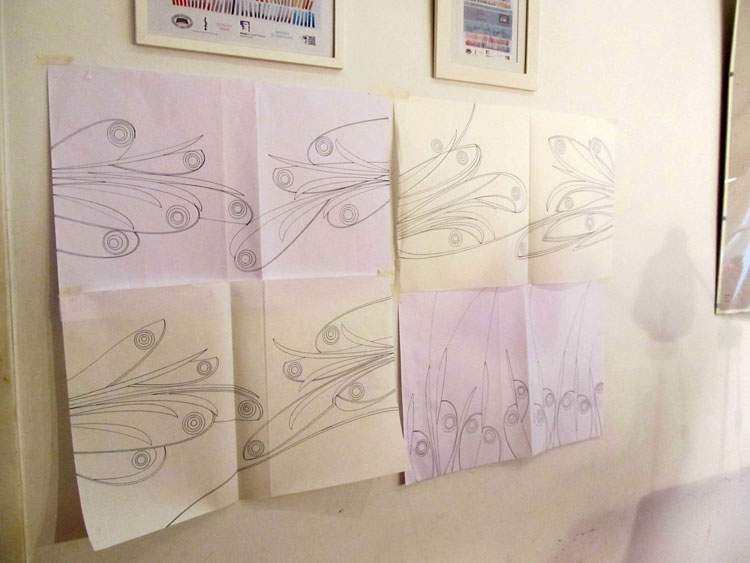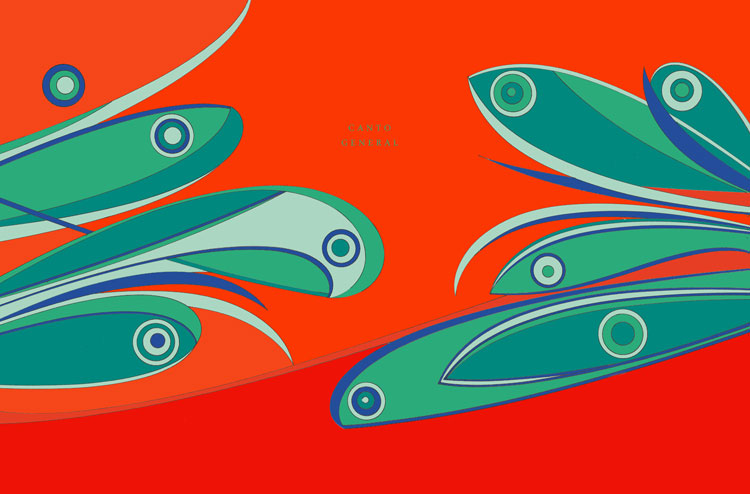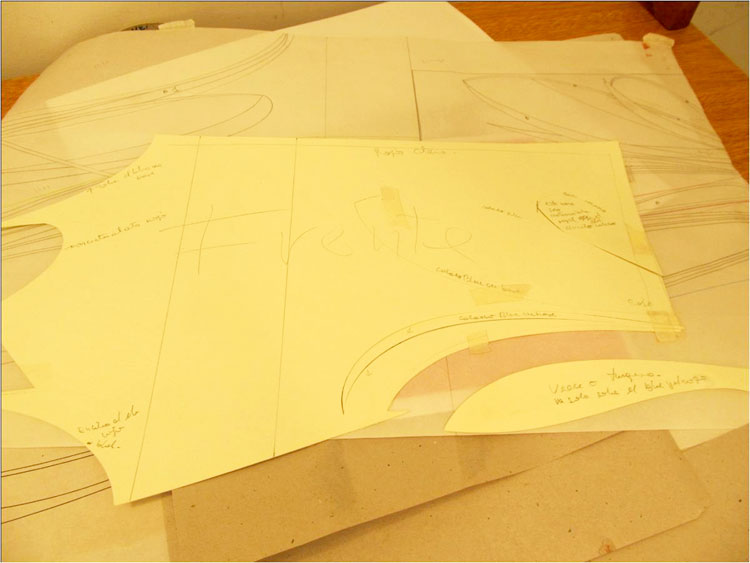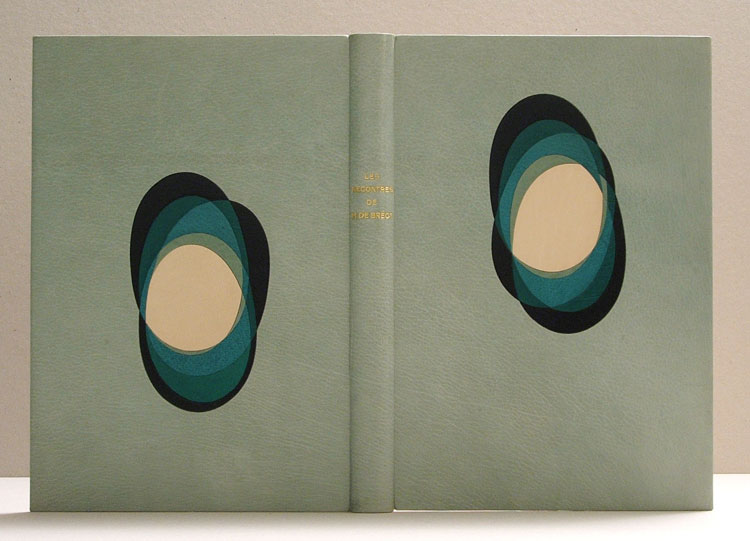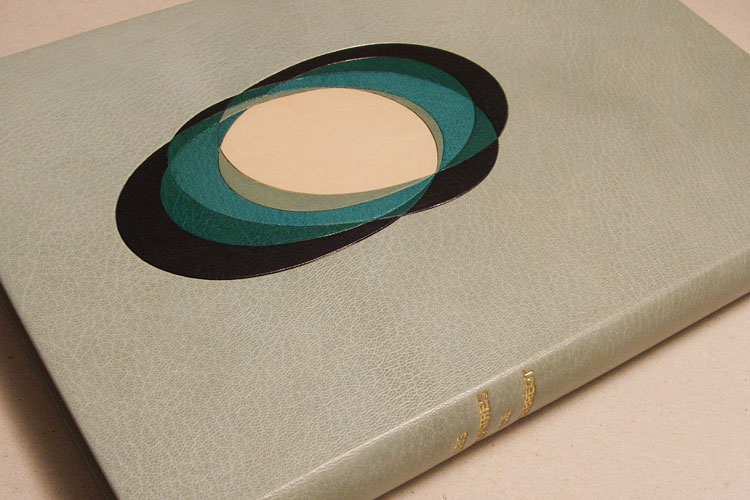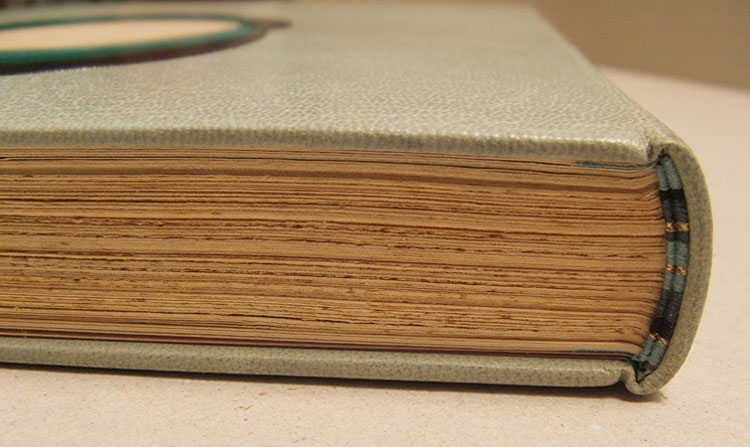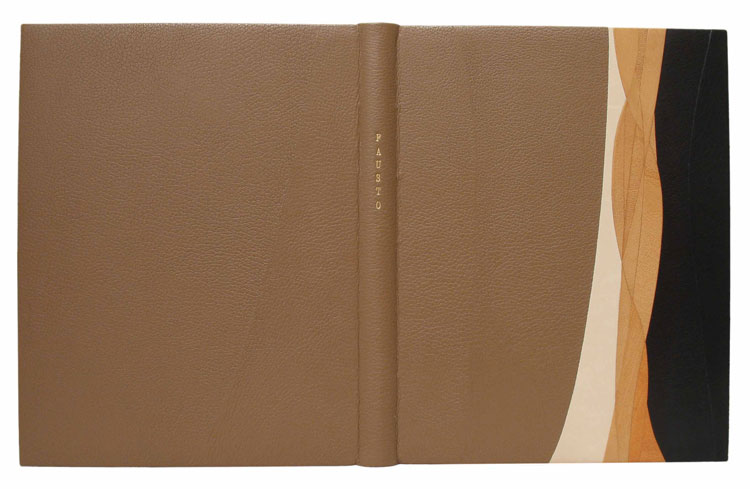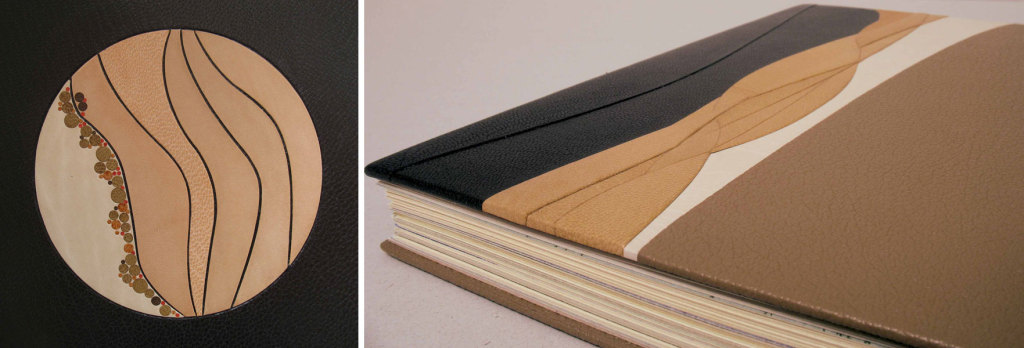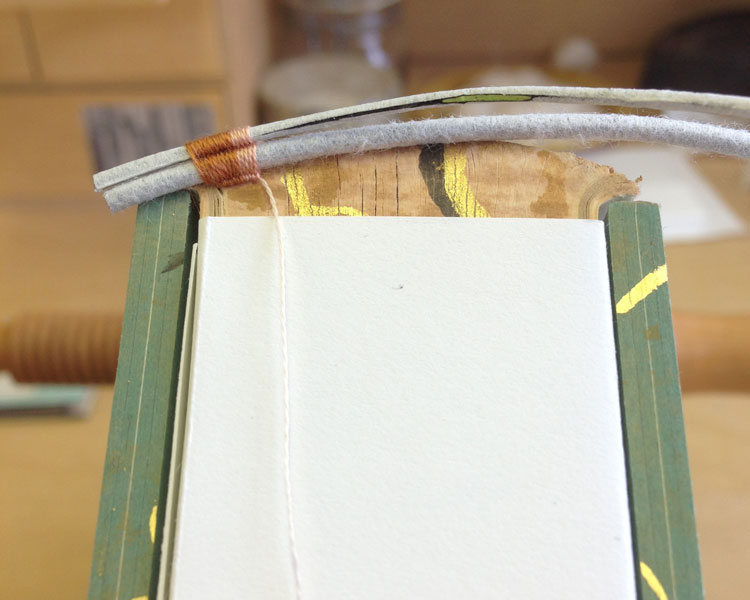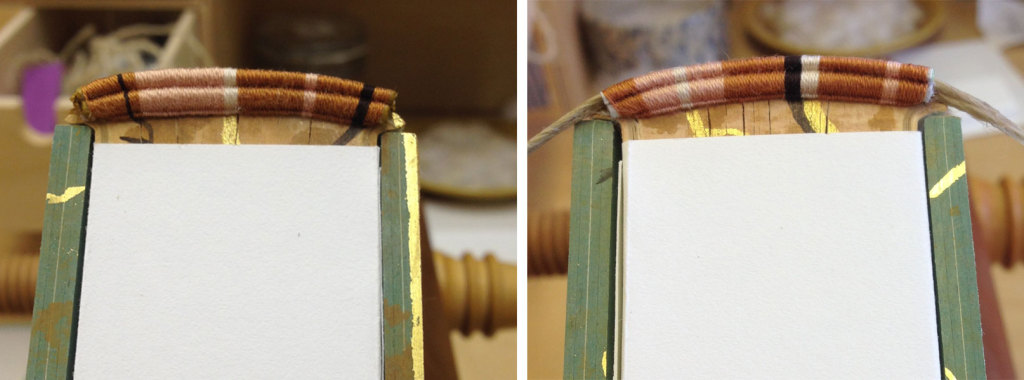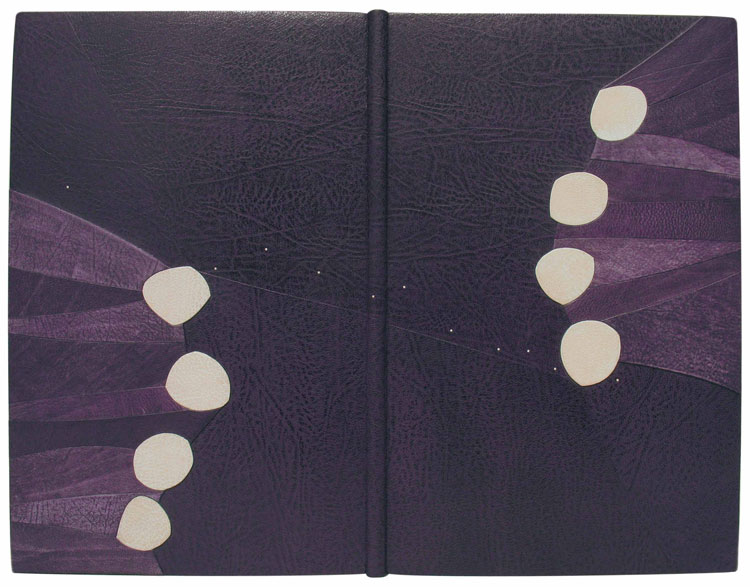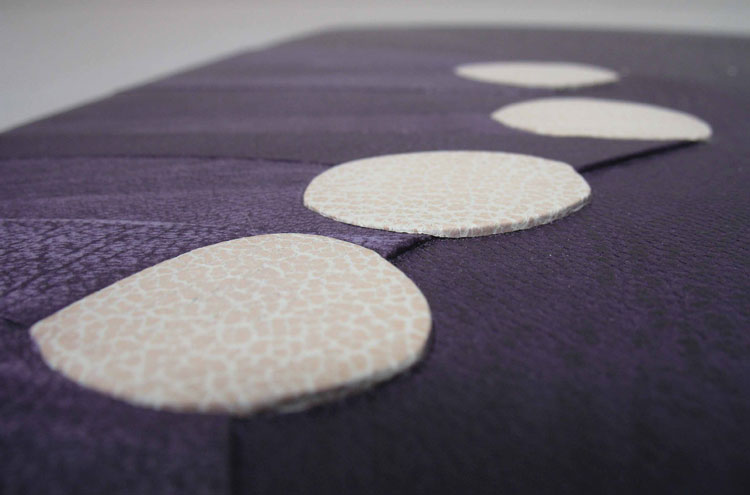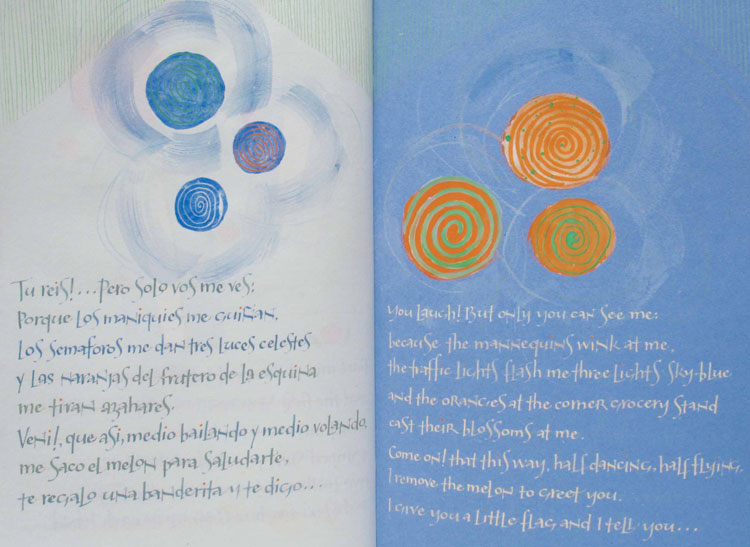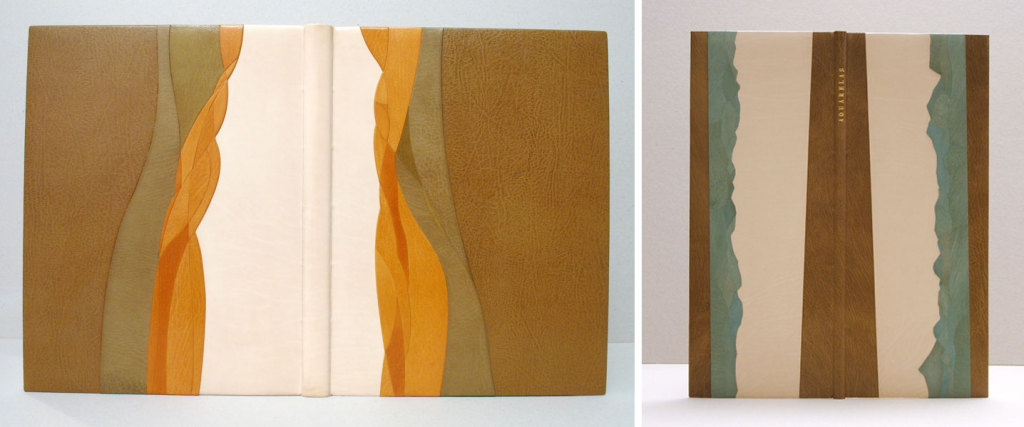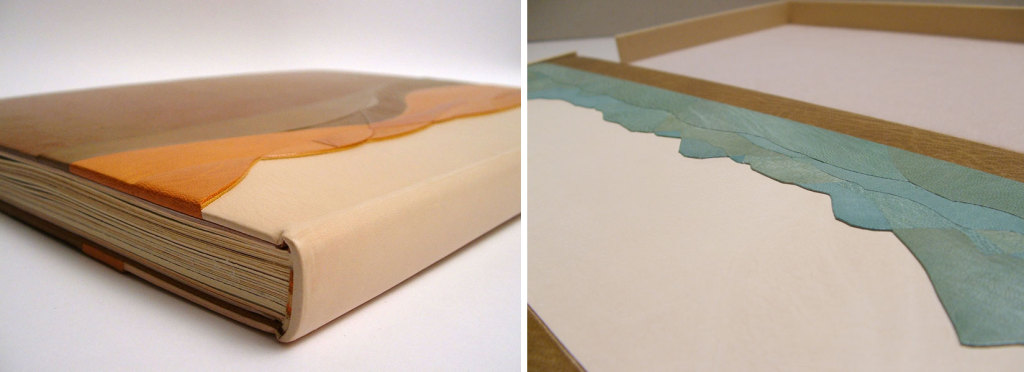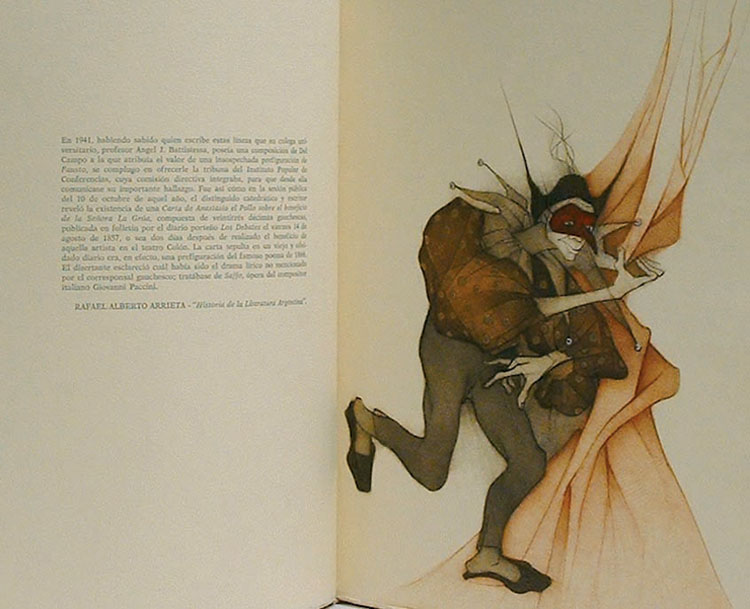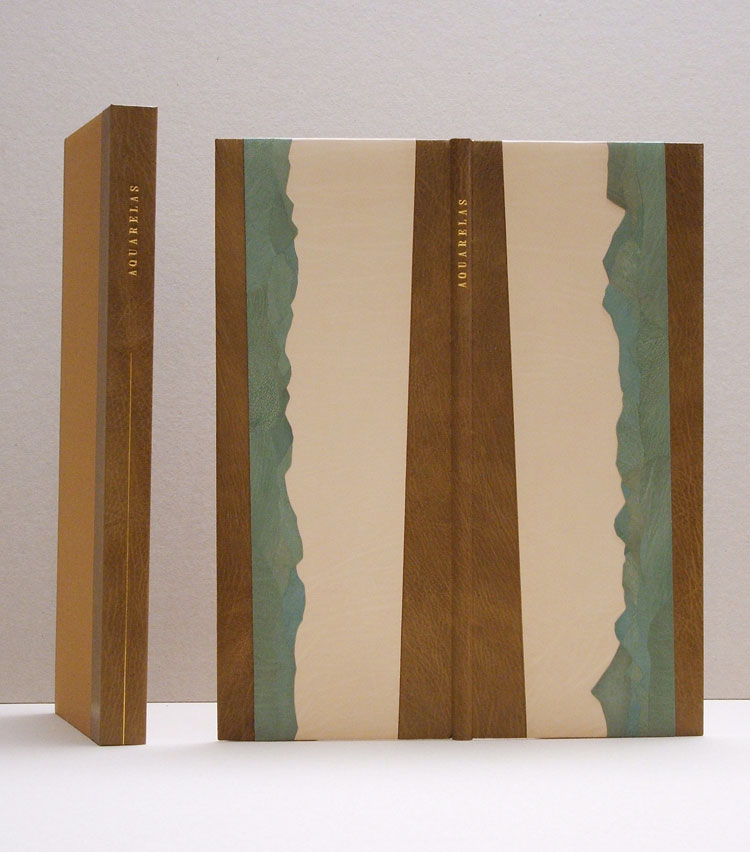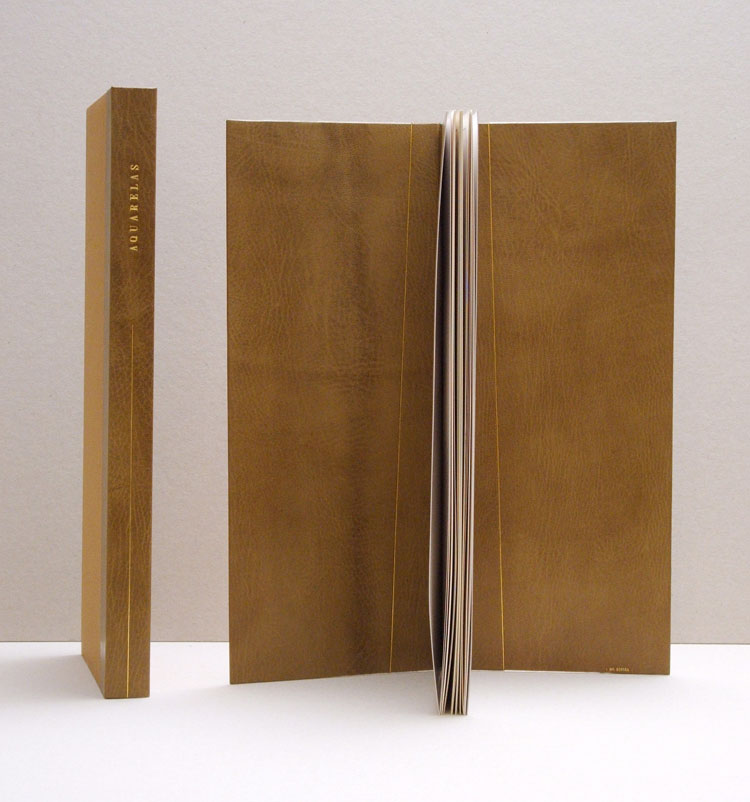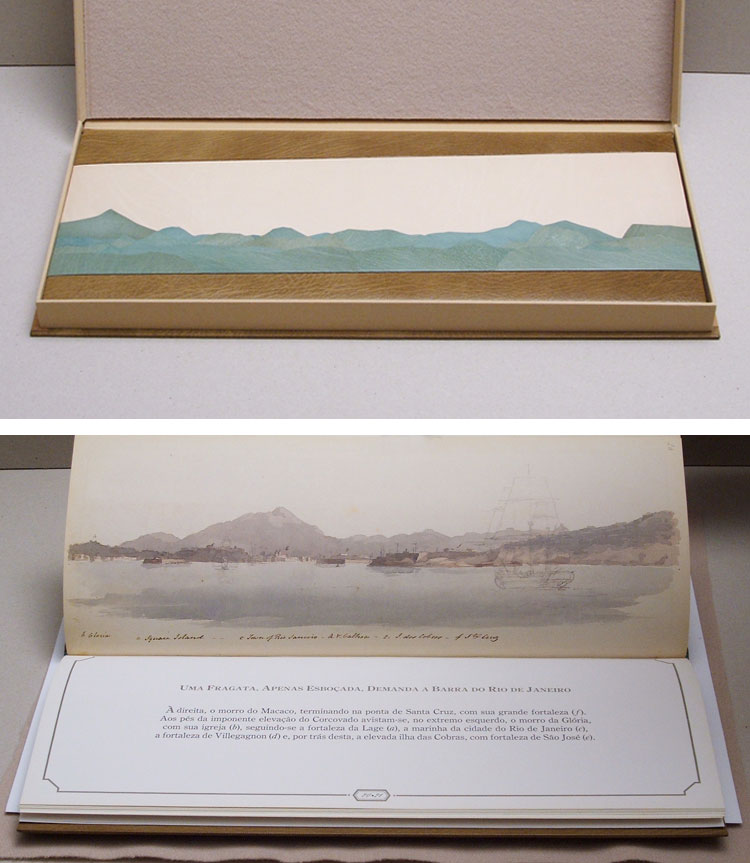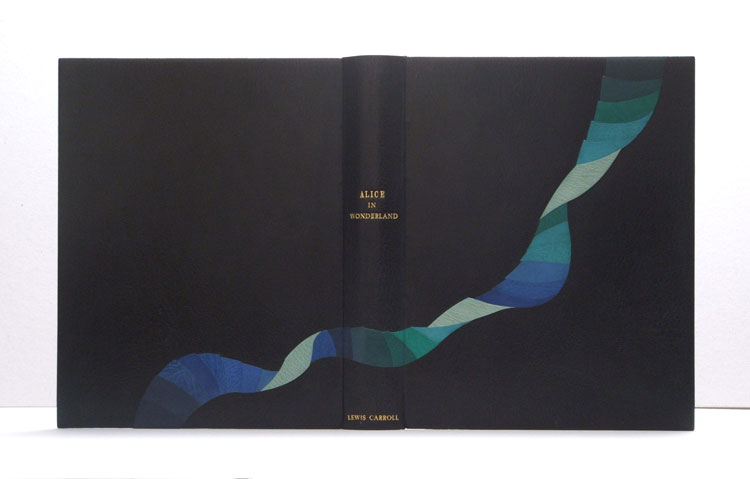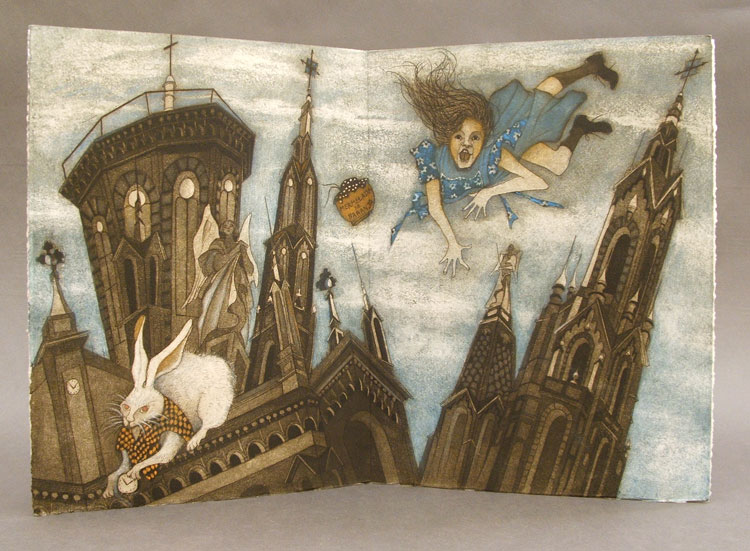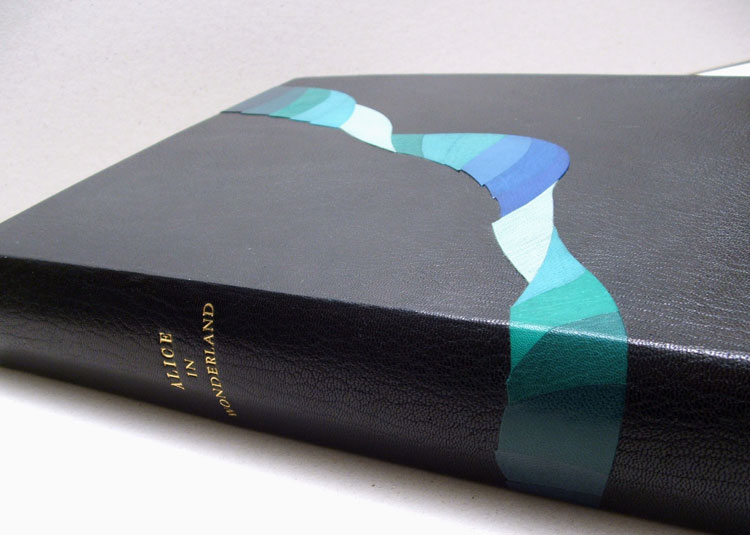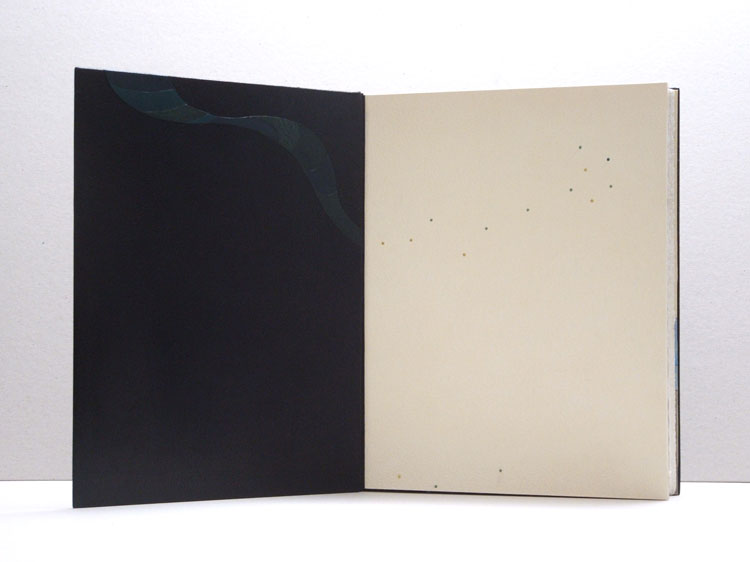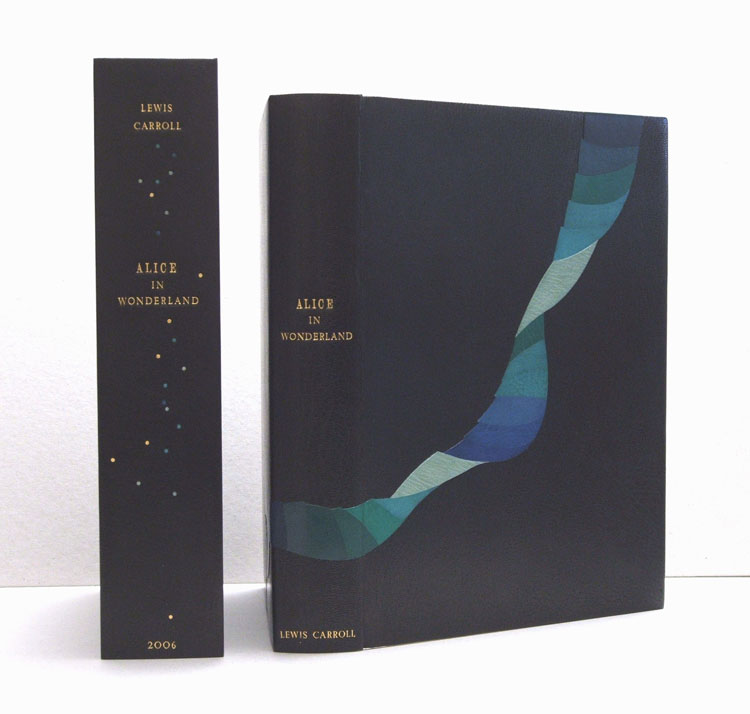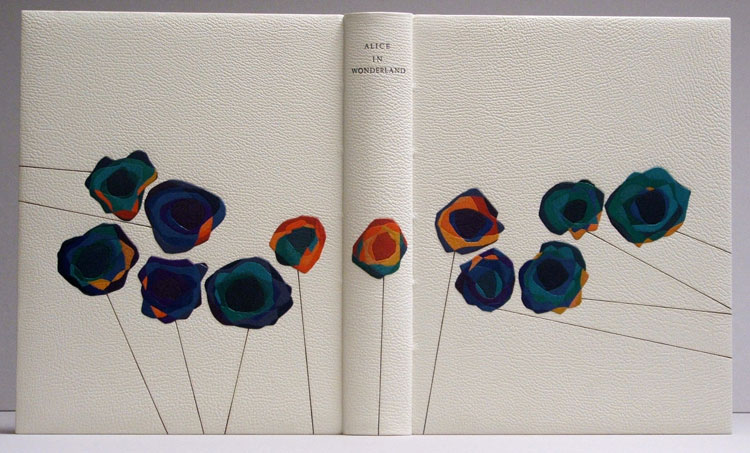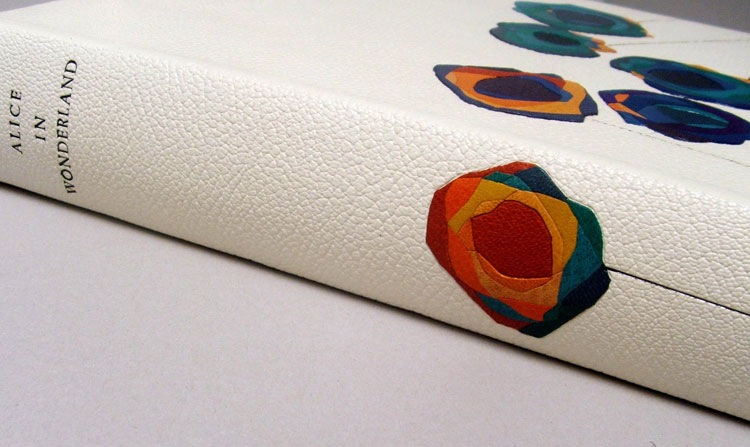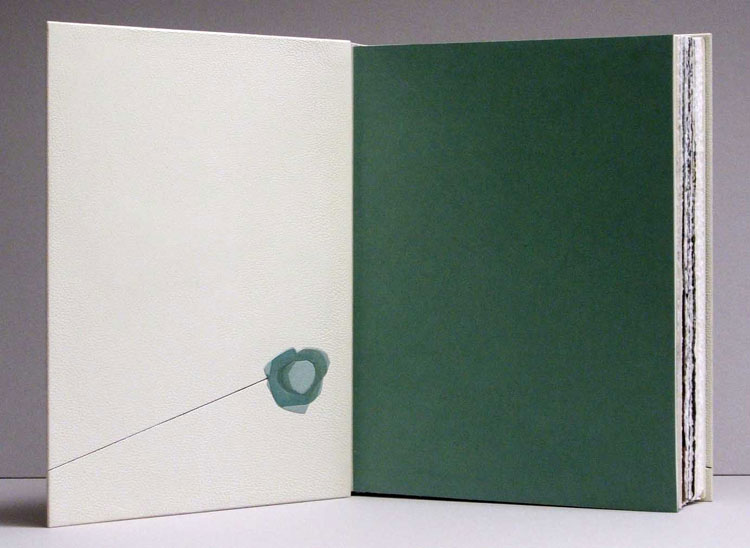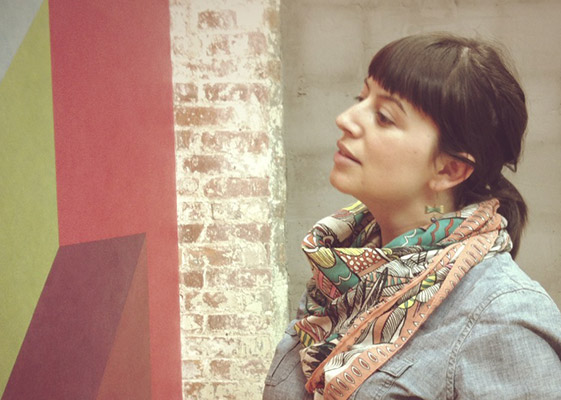The two bindings featured in this post are earlier pieces from Tracey Rowledge, but I think they represent her core interests in melding simple marks into complex gold tooled designs. The binding above is an edition of A Satyr Against Mankind by The Earl of Rochester, which was bound in a chestnut brown goatskin in 1999.
Below is one of two bindings Tracey has completed on Ulysses by James Joyce. This particular one being the earlier binding done in 1996. Also bound in a chestnut brown goatskin; the majority of the design is gold tooled with subtle touches of blind tooled lines.
There is a sense of exploration in the design these two bindings. The execution itself is awe inspiring and I set out to discuss Tracey’s technique and process for creating such expressive tooled designs.
The gold tooled design on these two bindings is reminiscent of Ivor Robinson’s work; the style is very free and uncontrived. Do you execute this form of design directly on the book in a spontaneous manner or are you tracing out the design from a planned drawing?
Thank you for the compliment of writing that these two bindings are reminiscent of Ivor’s work, for me what we have in common is leather, gold leaf and the drawn line. Ivor’s work is majestic in its rightness, the tooled lines have a tension and a stillness, which in some works causes the image to reverberate. My interest is to capture the energy of mark-making via the non-gestural process of gold tooling, I’m interested in the play between how something looks and how it is made. How can something that was made intuitively with a pen or pencil be transcribed by the painstaking process of gold tooling – and yet it can. To gold tool a gestural image you need to transfer the image onto the cover by blinding it in through a hand-made paper template, then you blind-in direct to ensure the grain is crushed in the impression and is of the correct depth; then you paint two layers of BS Glaire into all the impressions and then you gold tool each impression with up to nine layers of gold (this is done by gold tooling three layers at a time). This means that I will go into each impression up to five times.
For something to look spontaneous it needs to have been painstakingly planned and meticulously executed – Ivor and I certainly had that in common!
You have been noted to incorporate several shades of gold in your tooling. What are the qualities to mixing different tones of gold?
The different golds are my pallet of colours. Using a gold that is more yellow or more grey will alter the balance of the image and will take it away from being what I think of as standard gold tooling. Using Moongold can make an image appear playful and delicate, using Caplain can give an image a solemn feel. It depends on what I’m wanting to convey as to what colour leather or paper I use to cover the book and what type of gold leaf I use.

